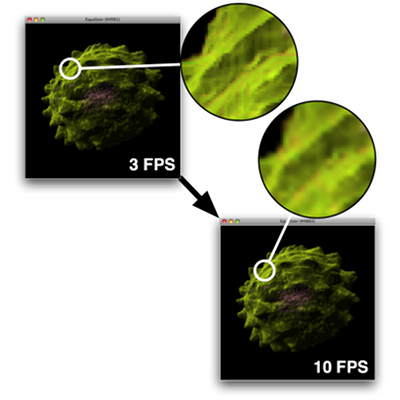The Dynamic Frame Resolution (DFR) Equalizer delivers a constant framerate by adapting the rendering viewport for fill-limited applications. This feature is sometimes called dynamic video resize (DVR).
Dynamic Frame Resolution (DFR) trades rendering performance for visual quality. The rendering for a channel is done at a different resolution than the native channel resolution to keep the framerate constant. The DFR equalizer adapts the zoom of a channel, based on the target and current framerate. It is typically used for fill-rate bound applications, such as volume rendering and raytracing.
The figure above shows DFR for volume rendering. To achieve 10 frames per second, the model is rendered at a lower resolution, and upscaled to the native resolution for display. The rendering quality is slightly degraded, while the rendering performance remains interactive. When the application is idle, it renders a full-resolution view.
The dynamic frame resolution is not limited to down-scaling the rendering resolution, it will also up-scale the resolution if the parameters allow for it. Upscaled rendering, which will downsample the result for display, provides dynamic anti-aliasing at a constant framerate.
Data set courtesy of Olaf Ronneberger, Computer Science Institute, University of Freiburg, Germany



